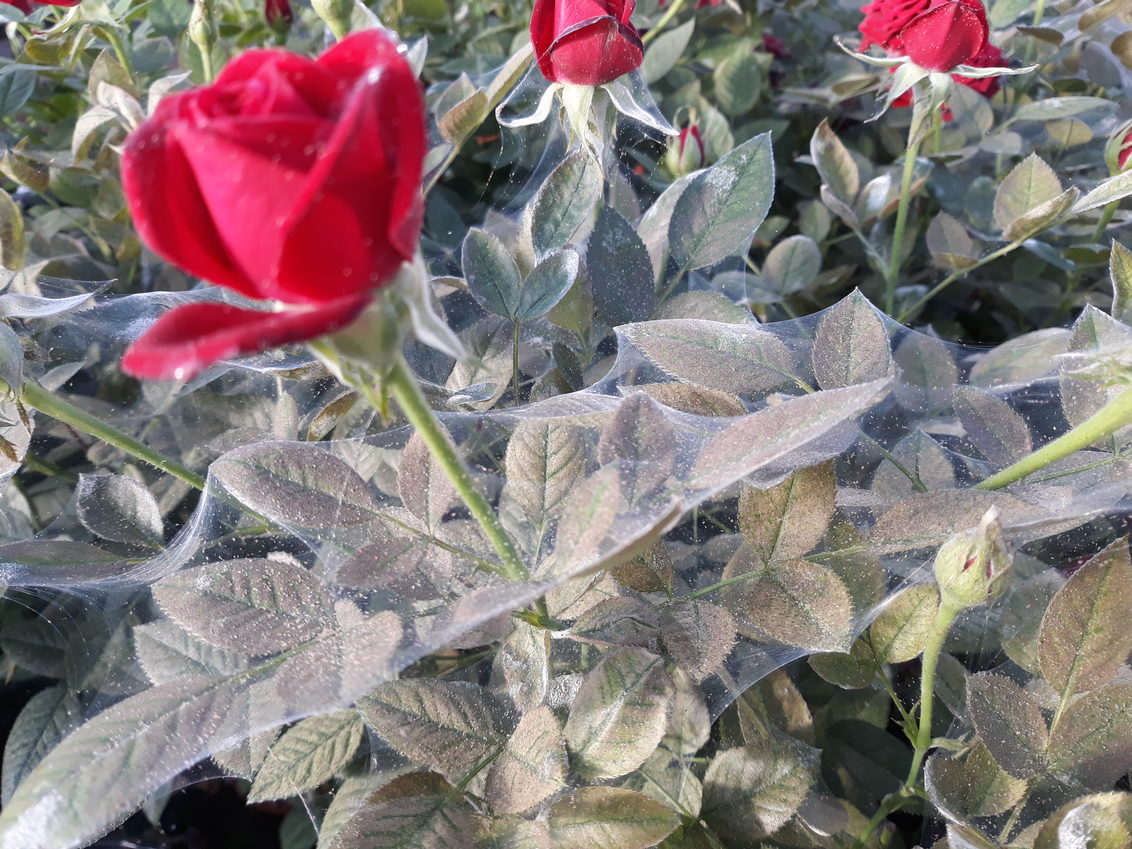Stay a step ahead of spider mite
What are the key elements in an IPM programme for spider mite?
How should I use Dynamec as part of an effective spider mite strategy?
Glasshouse or two-spotted spider mite, Tetranychus urticae, is the pest that growers looking for control advice on Syngenta Ornamentals’s website have searched for most frequently this year. That’s hardly a surprise given just how quickly populations, and the damage they do, can get out of hand.
Spider mites favour warm, dry conditions and can be a particular issue in glasshouses because of their rapid life-cycle – around 12 days at 21°C – and many overlapping generations. They can be active year-round if the temperature doesn’t drop below 16°C.
They are a pest that is virtually impossible to control with chemical sprays alone. That’s partly because of the limited number of effective active ingredients now available, making it difficult to assemble a resistance management programme, and partly because your spray technique has to be spot-on to target them – they tend to live on the undersides of leaves and within crevices so any you miss will quickly reproduce and spread.
For protected ornamentals, the most sustainable control – in all senses of the word – is achieved with natural enemies supported by the use of an acaricide such as Dynamec.
Dynamec has two key roles here thanks to its effectiveness (with on-label authorisation on protected ornamentals) but relatively short persistence.
First, it can be used as part of your pre-season clean-up, before introducing biological control agents (see our earlier blog at syngentaornamentals.co.uk/blog/advisory-blog/time-tackle-spider-mite).
Second, Dynamec is an ideal ‘reset’ treatment when sudden changes in conditions shift the balance in favour of the pest which starts to outrun the biocontrols. It’s able to bring spider mite populations down to a level where biological agents can be reintroduced.
With resistance management in mind, other chemical actives effective against the pest include clofentezine (outdoor crops) and etoxazole (protected crops), both under EAMUs.
Biorational treatments, such as fatty acid and maltodextrin products and a formulation of natural pyrethrins with rapeseed oil with claims for activity against spider mites, can have a part to play too. The biopesticide Beauveria bassiana is also an option, though be aware different products contain different strains of this fungus and some are easier to use than others.
The speed with which a spider mite population can outpace biocontrol agents is the reason why fastidious monitoring of both pest and biocontrol agent populations is crucial to managing your programme.

A biocontrol programme for spider mites
You are aiming for a preventive programme so introducing the biocontrol agents early, before you start seeing damage, is the key.
Native species of predator work well when temperatures are still relatively cool, with Amblyseius andersonii a good one to start off with, being active at temperatures as low as 6°C and able to feed on pollen and fungal spores to keep itself going if pest numbers are low.
Phytoseiulus persimilis is the most widely used specialist spider mite predator. It is active at 15-18°C and spreads through the crop searching for colonies.
As temperatures rise in summer you might then want to consider Amblyseius californicus. It is not a native species so one of the conditions for use is it can only be released in a permanent enclosed greenhouse. It complements the native agents because in warmer conditions, P. persimilis tends to stay in the cooler lower parts of the plant canopy while A. californicus works in the warmer, drier, tops of the plants.
The gall midge species Feltiella acarisuga is a spider mite specialist and feeds on all stages of its life-cycle, including the all-important eggs. It’s very effective at high levels of pest populations.
As well as regular monitoring, to make sure predator populations are keeping up with the pest, do check that the predators you receive from your supplier are in good condition on arrival – there have been studies showing that numbers emerging from release sachets and cards can vary between suppliers and even between batches from the same supplier.
You can find more about biological control and spider mite management from our partners at Fargro.

